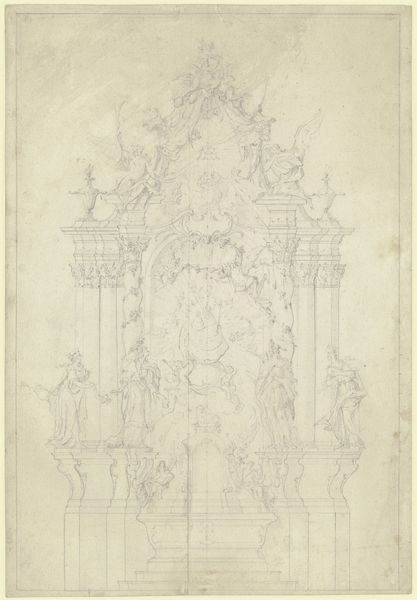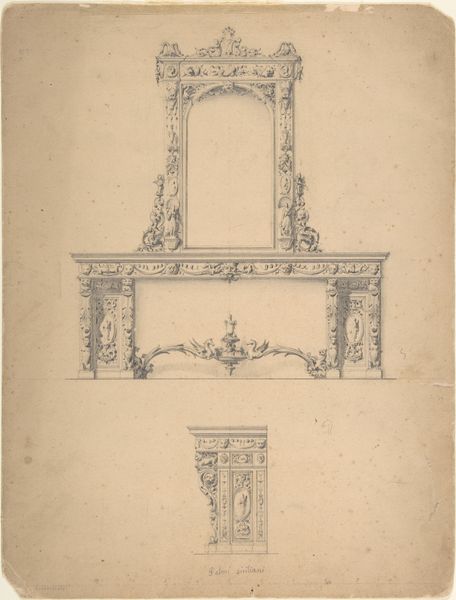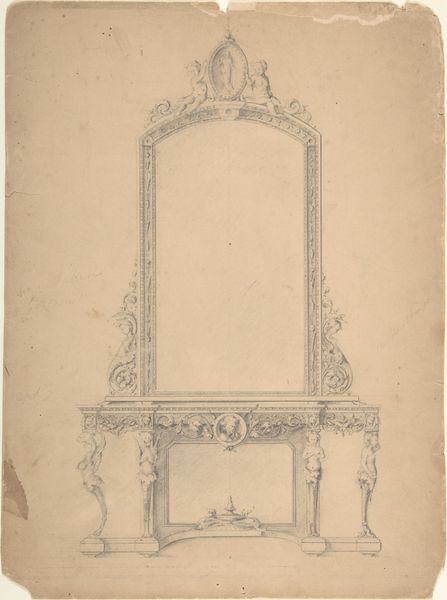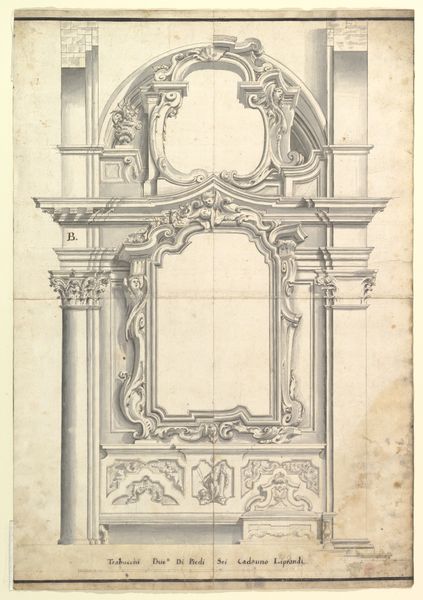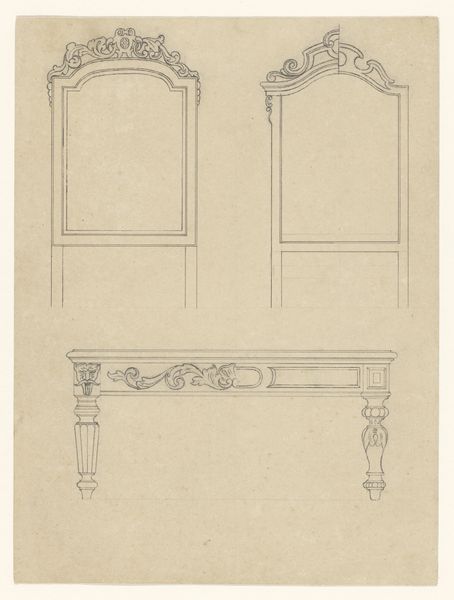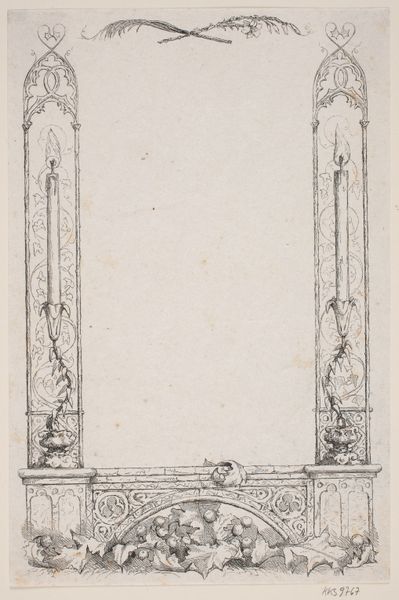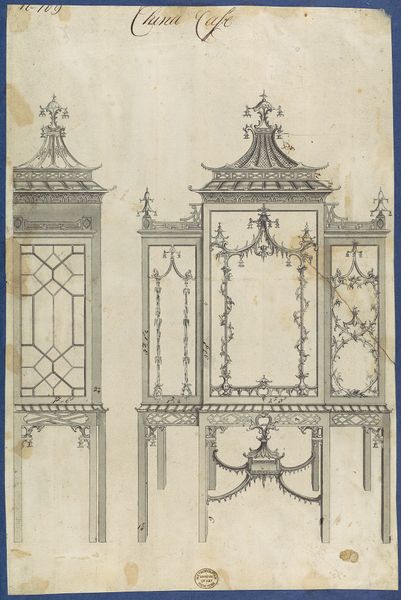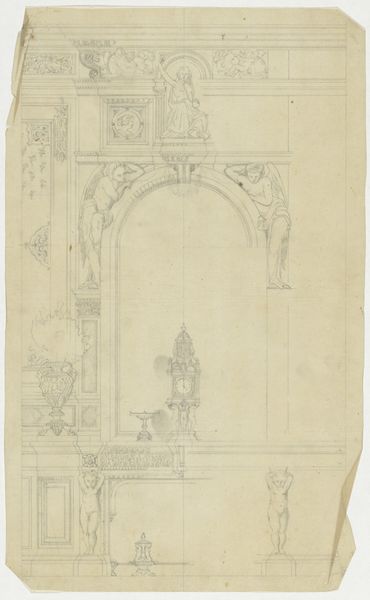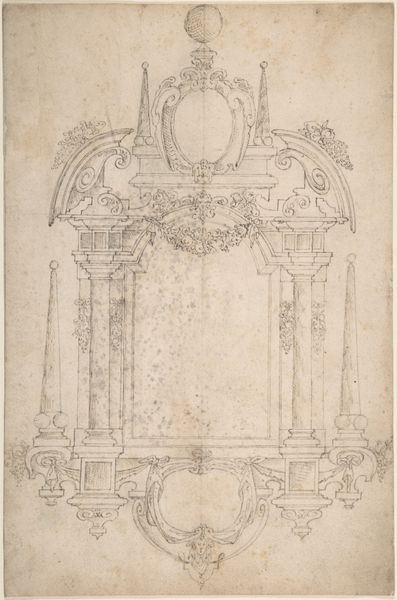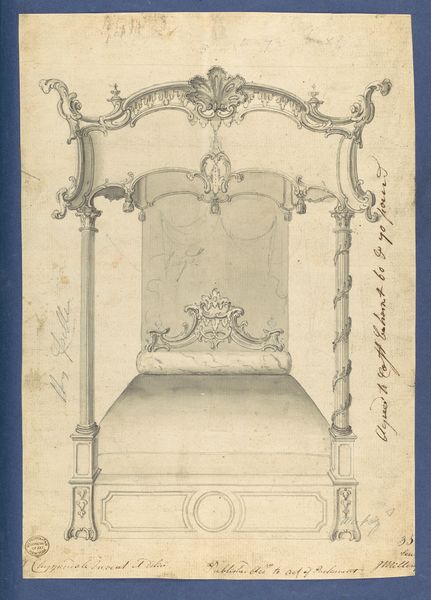
drawing, print, etching, pencil
#
drawing
# print
#
etching
#
coloured pencil
#
geometric
#
pencil
#
horse
#
line
#
sketchbook drawing
#
decorative-art
Dimensions: sheet: 14 15/16 x 11 in. (38 x 28 cm)
Copyright: Public Domain
Curator: Immediately, it gives off this air of delicate, unfinished dreaming... as though I've stumbled into the artist's most fleeting thought. Editor: And yet, this drawing by Charles Hindley and Sons, titled "Design for a Mirror", presents a rigid symmetry indicative of a highly developed industrial aesthetic. It's an etching with pencil and coloured pencil, from sometime between 1841 and 1900. We see it here today, far removed from the factory floor, safely preserved in the Met. Curator: Factory floor feels... sterile. Look at the rampant ornamentation. The little horse crowning the top, almost a unicorn! Two rampant mythological creatures flank each side. The geometric embellishments are almost too much. Editor: These elaborate details weren't simply whimsical. By the mid-19th century, there was this surge of national pride expressed through ornamental programs. This was fueled by an industrialized economy seeking to reflect its dominance, visually, both domestically and across its Empire. Curator: The little flourishes are the thing for me, that impulse for… extravagance. The suggestion of gothic, maybe, fighting the inevitable engine age? Like a bird trying to build a nest in a machine. Is this decorative act a quiet scream against mass production? Editor: That "quiet scream," as you so eloquently put it, found its voice within specific institutions. Think about it, the design wasn't created for individual, let's say "bohemian," pleasure, it was to satisfy demands. The great exhibitions that dictated what was, or was not, beautiful or useful. Curator: Hmm, and still, look at this rendering. I can almost see the maker struggling to add personality, just beyond the reach of the factory stamp. To feel that fight is... intimate somehow. It transcends any intended utilitarian purpose. Editor: Yes, while some might view it as a mere relic of industrialized aesthetics, for me, it underscores the profound influence social forces exert on every level of art production, no matter how seemingly trivial the object might be. Curator: A design both caught in its era and somehow just beyond its grasp. It makes me consider the endless cycle of human desire and human production. Editor: It is really amazing to observe how social trends define individual aesthetics within various contexts across time.
Comments
No comments
Be the first to comment and join the conversation on the ultimate creative platform.

